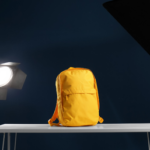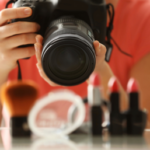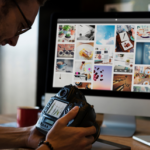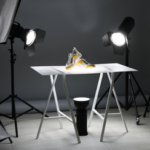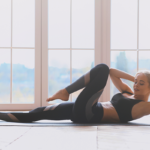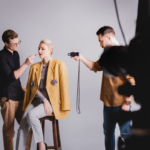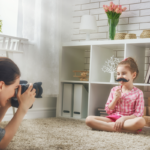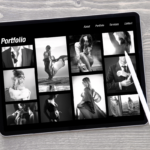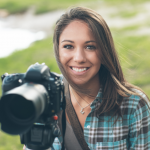6 Tips to Choose your first professional camera
If you are looking around for your first professional camera, you might feel overwhelmed by the number of possible choices. A top-quality, professional camera is a wise investment—and an expensive investment at that. However, the good news is that a lot of professional cameras available on the market nowadays are high-quality, so you are not likely to pick one that just does not work.
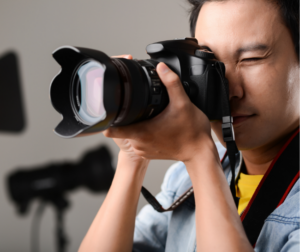
The key is finding the right professional camera for your precise needs so that it would serve your photography hobby or business for many years to come.
The question is, how do you narrow down the choices with a wide range of camera models, features, and accessories? It is a lot easier than you imagine if you know and understand what you need and what you want before purchasing one.
You would be better able to choose the best professional camera with the features you need and want, without feeling overwhelmed and distracted by the many other cameras that you don’t really need. Here are some tips that can guide you before you start your search for your first professional camera.
Know the Different Professional Camera Types
There are a lot of different types of professional cameras, ranging from basic smartphone cameras to powerful digital versions. However, if you are searching for your first professional camera, there are a couple of major types that you should look into.
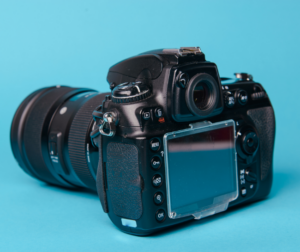
DSLR
Digital single-lens reflex or DSLR cameras are what a lot of people think of when they imagine a professional photographer shooting away on a photoshoot.
DSLR cameras have two distinct parts: the lens and body of the camera. They also have a mirror, or “viewfinder”, that let you preview the scene before you capture it.
In DSLR cameras, the proper lens makes the difference when it comes to the quality of the image. Better lenses help produce better photos. DSLR lenses are also interchangeable, so it is easy to customize and adjust the quality and image output by testing different lens types.
For many budding professional photographers, a DSLR camera is a simple and safe option with enough functionality and features to meet their preferences and needs.
Mirrorless
In the last few years, mirrorless cameras have entered the industry as an alternative to the DSLR cameras. Although the mirrorless camera has almost the same internal parts as DSLR cameras, including interchangeable lenses, they boast of a mirrorless or electronic viewfinder, making the whole camera lighter and more compact.
A con of mirrorless cameras, however, is that they have smaller sensors than DSLRs. Hence, they are not as advanced in shooting in low light or registering image depth.
Should Professional Camera Brands Matter?
The truth is that the professional camera brand you purchase has minimal impact when it comes to image quality. It all boils down to the lens quality and the artistry of the professional photographer behind the camera.
While Nikon and Canon are the two most well-known professional camera manufacturers, one of the many emerging brands may still suit your preferences and needs at a much lower price point. Instead of getting fixated on a specific camera brand, you can try cameras from other manufacturers to zero in on the one that is the most convenient and comfortable for you to snap with, and that best suits your budget and needs.
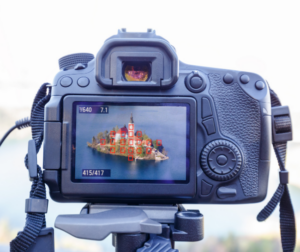
Set a Budget
In professional cameras, “ballpark pricing” does not exist. The price of DSLR cameras ranges from a few hundred dollars to hefty thousands of dollars. In this case, the best thing to do is to set how much you are willing to shell out and find a camera that falls within that range. Don’t worry; you WILL find one.
The trick is to list down which features you cannot live without and features that you could sacrifice to stay within your budget.
Distinguish “Nice-to-Have” vs. “Must-Have” Features
The list of features you can get as part of your new professional camera is practically endless. Some of these features are important, while others you would probably never even use. Nevertheless, a feature that you will absolutely need is the capability to switch to manual mode.
Keep in mind that the professional camera sets the light exposure and shutter speed for you in automatic mode. On the other hand, you adjust the settings yourself in manual mode, giving you more artistic freedom to capture a wide variety of shots. Also, you might want to double-check the ISO or the professional camera’s light sensitivity. A higher ISO would make sure that you can capture great quality images in low light conditions even without a flash.
Don’t be sidetracked by the “noise” of professional camera features that you do not actually need. It would be best to focus on the features that cater to your needs as a professional photographer and would help capture the kinds of photos you want to produce.
Which Lens?
Whether it’s permanent or interchangeable, the right lens can make or break your photos. Here are a few facts you need to know about lenses to make an informed choice.
Focal Length
It identifies the angles that your lens would capture. Telephoto lenses shoot a narrow view, while wide-angle lenses capture a larger view.
Aperture
It is the hole inside the lens that regulates the light that goes through the camera. The bigger the aperture, the costlier the lens would be, but it would allow you to shoot in darker conditions.
Know Where to Buy
There are a lot of different outlets to shop for your first professional camera, including brick-and-mortar shops and online retailers. Start with your research online, and once you have set your budget, kind of professional camera, must-have features, and right lenses, you can begin comparing prices.
As you look for your first professional camera, keep in mind that the only “perfect” professional camera is the camera, regardless of the price or brand, that’s perfect for you. Do not let yourself be intimidated by the plethora of choices available.






